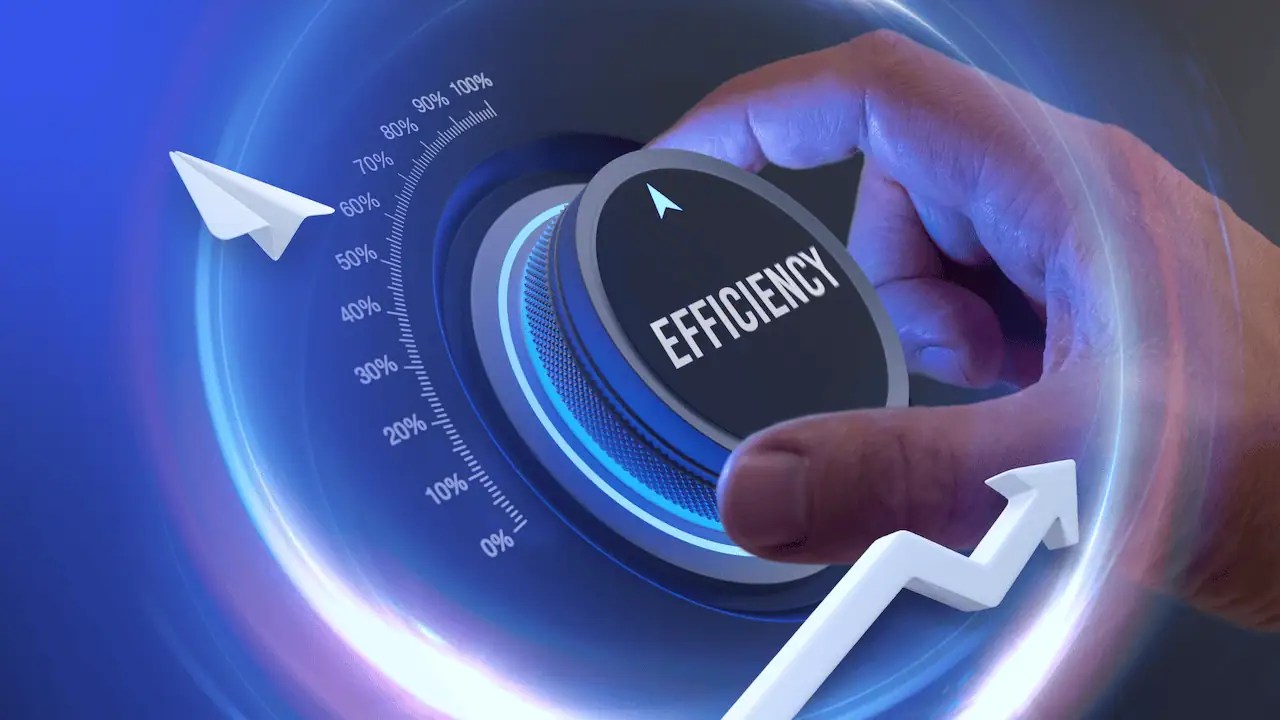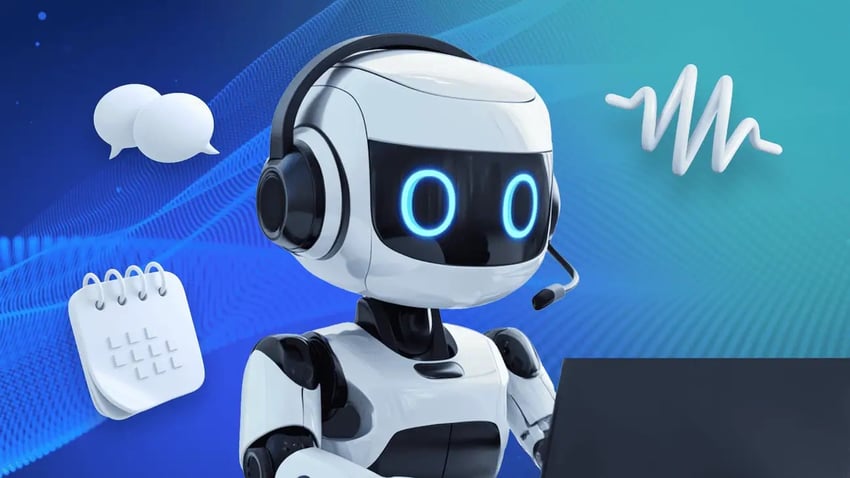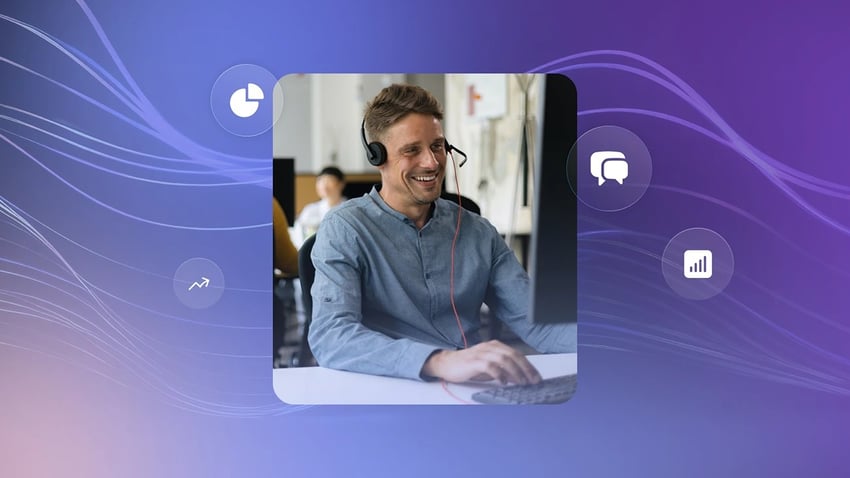Even the most pleasant customer service attitude falls flat when customers face long wait times, repeated handoffs, or have to explain the same issue more than once. While politeness matters, customers contact you for resolution, not just a friendly conversation. The faster and more effectively you solve their issues, the better the customer experience.
This guide breaks down what customer service efficiency actually means, why it matters now, and the practical steps teams use to resolve issues faster without sacrificing service quality.
What Customer Service Efficiency Means
Customer service efficiency is about resolving issues quickly, accurately, and with minimal effort on the part of the customer. It means using time and resources wisely while improving the overall experience.
Efficient support teams rely on customer care tools that bring customer information into one place. When agents can view past conversations, tickets, and survey feedback together, they avoid asking the same questions and reach solutions faster.
Automation also plays a key role. If a customer reports a billing issue, automation can automatically assign it to the right team, apply relevant tags, and set a priority level without requiring human input. This keeps agents focused on what matters: solving problems.
What efficient customer service looks like:
- Quick resolutions with fewer steps
- Automated workflows that remove manual tasks
- Self-service options that handle common requests
- More agent time spent on complex, high-impact issues
Self-service tools, such as a searchable help center or FAQs, allow customers to find answers on their own. That reduces ticket volume and increases team productivity.
Customer service efficiency drives retention, improves satisfaction, and creates space for better service delivery.
Why Is Efficiency Important in Customer Service?
AI-driven customer service has become an industry standard, making efficiency the baseline rather than a differentiator. What will set your business apart is how you combine this efficiency with effectiveness to deliver meaningful support while keeping costs manageable. As economic pressures like rising tariffs squeeze margins, a balanced approach becomes essential.
Customers expect speed
Customers view anything less than immediate support as a delay. The 24-hour service-level agreement that once satisfied customers now feels glacially slow to many.
Consider your own recent support experiences. If you received instant AI chat assistance from a food delivery service, that experience will have reset your expectations, even when you later contact a B2B provider with different service models. While statistics show 74% of customers expect responses within 24 hours, many actually want immediate resolution. Our research indicates that 40% of consumers expect replies within an hour on social media and 79% within 24 hours, but only about 50% of businesses meet these standards.
Your aim should be to meet, and ideally exceed, these expectations via faster and efficient customer service.

Efficiency drives customer satisfaction
Many customers have grown accustomed to businesses that disappear after the sale. When companies break this pattern with efficient post-purchase support, it creates a mindset shift.
Customers begin to see your business as a partner rather than just a vendor. This perception builds loyalty that, after multiple positive experiences, transforms into advocacy. This directly enhances word-of-mouth marketing, creating positive narratives around your brand.
Fast, effective service doesn’t just satisfy customers — it makes them feel supported and valued.
The cost of inefficiency
Inefficiency damages both immediate revenue and customer lifetime value.
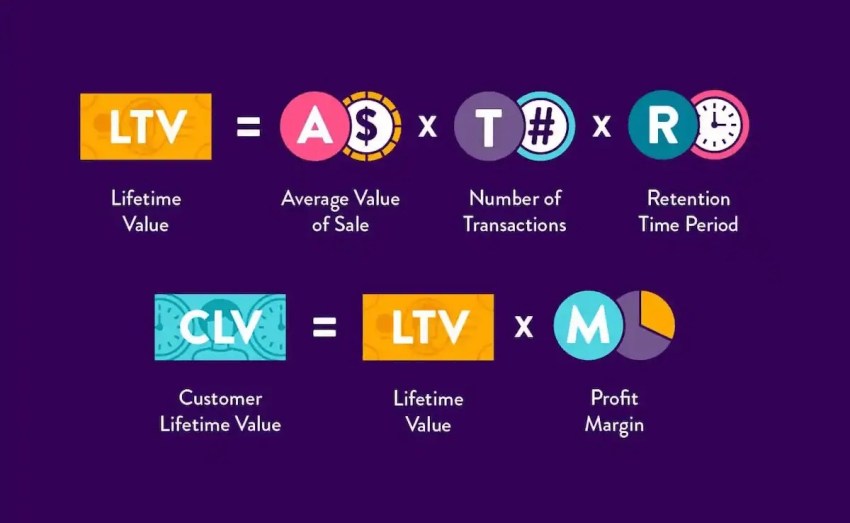
When customers repeatedly experience slow resolution times, their dissatisfaction grows. Not everyone will give your business a second chance.
These negative experiences lead to:
- Increased customer churn
- Damaged brand reputation
- Reduced future revenue potential
- Fewer customer referrals and recommendations
If your metrics show long average handle time (AHT) or high abandonment rates, addressing these inefficiencies should be a priority before further damage occurs.
Why You Don’t Have to Choose Between Efficiency and Friendliness
Customers contact support primarily to resolve issues. When agents offer friendliness without effective problem-solving, customers quickly recognize the disconnect.
Customers can easily detect inauthentic friendliness that masks an unwillingness to help. The best approach is professional efficiency, focusing on quick, effective solutions rather than unnecessary pleasantries. Efficient customer service creates space for genuine warmth in interactions, making friendliness feel authentic rather than forced.
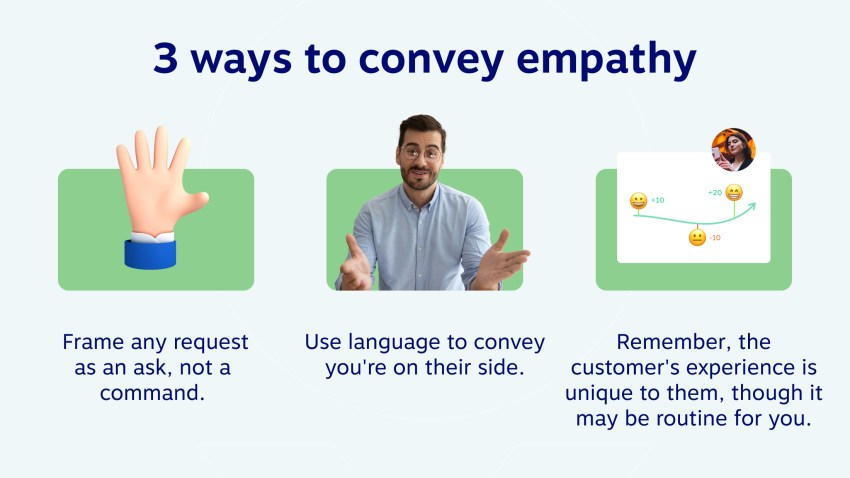
The myth of either/or
It’s a misconception that businesses must choose between efficiency and friendliness when they can achieve both simultaneously:
Myth: Fast service means cold, impersonal interactions. Friendly service can’t be efficient.
Reality: Companies like Trader Joe’s demonstrate that kindness and speed can coexist perfectly. Its customers consistently praise both the friendly staff and the fast checkout experiences. Moreover, customer service automation handles routine tasks through AI-powered systems, freeing agents to engage warmly and authentically with customers.
When agents depend on friendliness alone
While courtesy matters, friendliness cannot compensate for slow or ineffective service. Customers may appreciate a warm greeting initially, but frustration builds quickly when they still face delays or must repeatedly explain their issue.
Many customers prioritize speed over empathy when resolving straightforward issues. A global survey found that 54% of customers preferred quick service over slower but more compassionate assistance. While customers may remain polite during friendly but slow interactions, they remember wasted time, not pleasant conversations.
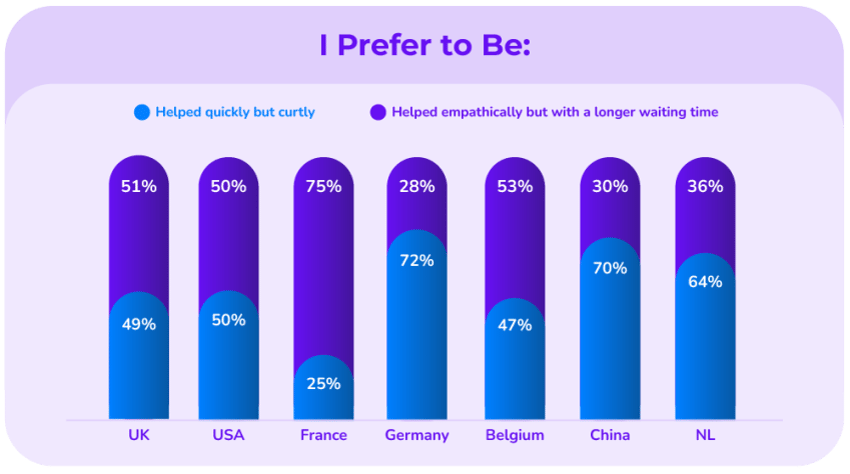
Key Metrics to Measure Efficiency in Customer Service
Organizations measure customer service efficiency through various metrics. Here are the most relevant indicators to consider:
- First-contact resolution (FCR): FCR is the percentage of issues resolved during the first customer contact. This is a strong indicator of efficiency, but it must be evaluated alongside customer satisfaction to ensure quality isn’t sacrificed.
- AHT: This refers to the average time agents spend resolving each case. Lower AHT suggests more efficient operations, provided quality safeguards remain in place.
- Customer satisfaction score (CSAT): This indicates customer feedback ratings after service interactions. When paired with FCR and AHT, CSAT helps balance efficiency with effectiveness.
- Customer effort score (CES): This measures how easily customers can obtain help. A low CES correlates strongly with increased customer loyalty.
- Response time: This refers to how quickly agents respond after customers submit inquiries or open tickets. On platforms like chat and social media, response speed significantly impacts satisfaction.
- Resolution time: This is the total duration from issue reporting to final resolution. Efficient teams minimize this time while maintaining service quality.
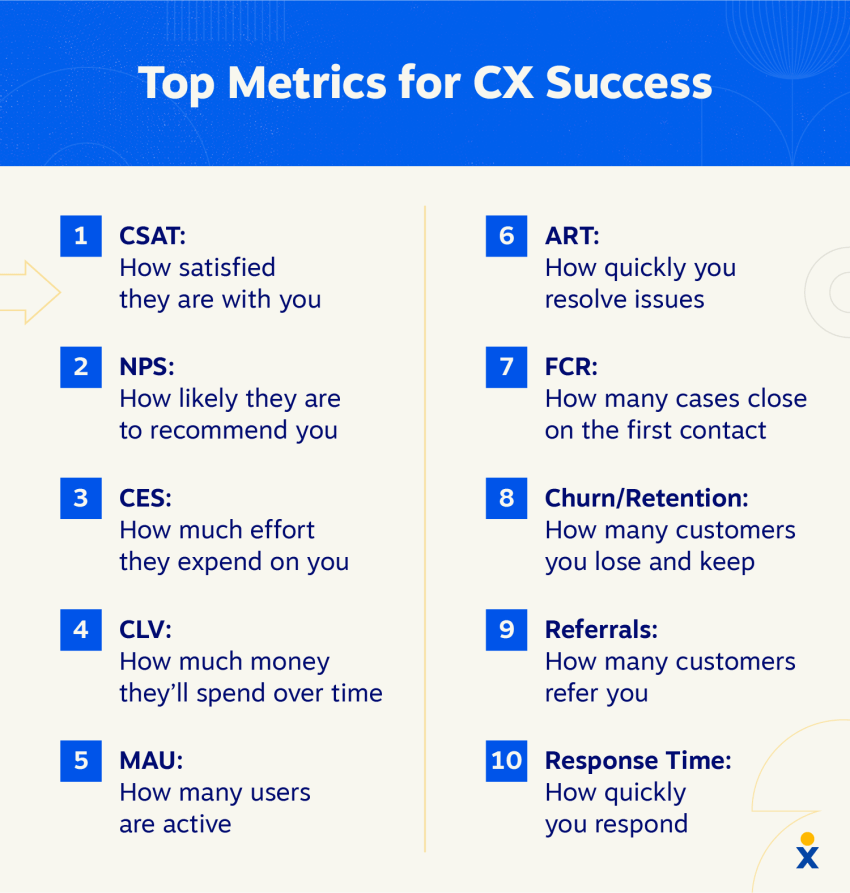
For a comprehensive assessment, use a combination of these metrics to evaluate both quantitative performance and qualitative service factors.
How to Improve Customer Service Efficiency: 5 Actionable Ways
Here are five data-backed methods to enhance customer service efficiency:
1. Automate repetitive tasks
Identify tasks that don’t require human judgment, such as collecting basic user information or determining contact reasons.
For instance, Nextiva’s IVR authenticates callers automatically and captures their stated need with NLP before an agent ever answers. This removes redundant security questions and prevents repeat authentications.
Map your manual routing process first, then implement software that automates call routing following the same logic. This automation frees agents to focus their time on high-value interactions with priority clients.
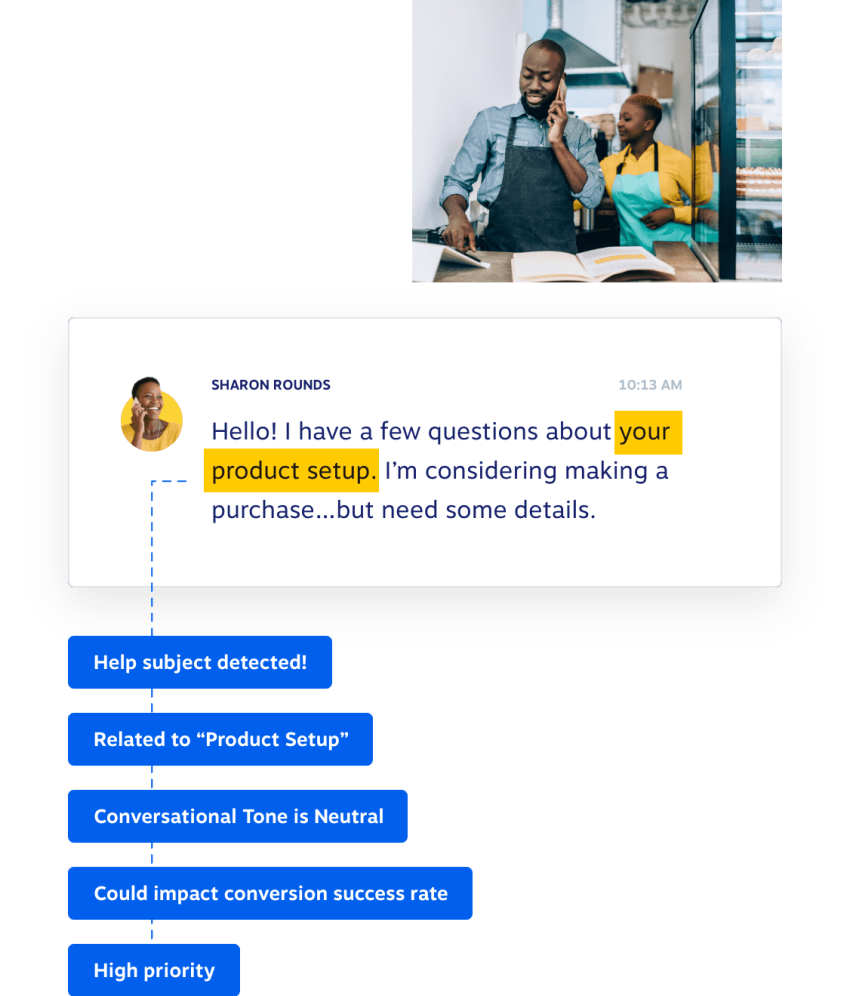
2. Empower agents with context
Implement CRM software pop-ups alongside automated routing to give agents immediate access to customer histories. This context eliminates the frustration of customers having to repeat information or verify their identity multiple times.
Solutions like Nextiva’s unified communications platform consolidate data from multiple channels, CRM records, and interaction histories, enabling more efficient service delivery.
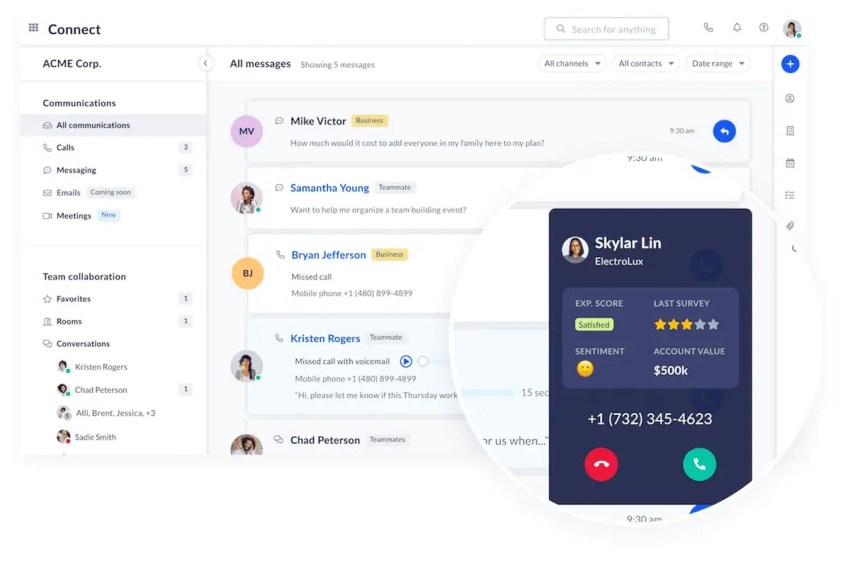
3. Offer self-service options
Develop help centers, knowledge bases, and community forums where customers can find answers independently. AI chatbots can enhance this self-service ecosystem by understanding customer queries and directing them to relevant resources.
Research from Zendesk indicates that 91% of customers would use an online knowledge base if it were available and tailored to their needs. You can empower customers to solve simple problems themselves, reserving agent time for more complex issues.
Self-service starts even earlier when callers tell an NLP-powered IVR what they need. Nextiva recognizes intent with 98 % accuracy and routes calls straight to the right skill group.
4. Optimize workflows
Document your manual ticket handling processes, then implement workflow automation through your helpdesk or contact center platform. Set up rules for automatic ticket assignment, response generation, and categorization to ensure inquiries reach the appropriate queues immediately.
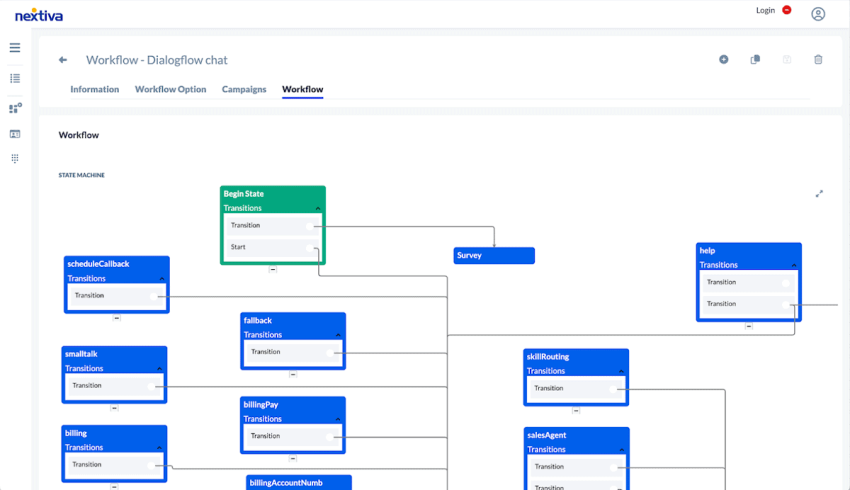
Specific workflow optimizations include:
- Intelligent ticket routing: Modern contact center platforms offer AI-powered triage that prioritizes urgent issues and prevents keyword oversights. According to Freshworks, this saves agents approximately 1.2 hours daily.
- Predictive staffing and analytics: Tools like Nextiva’s workflow optimization solutions forecast call volumes based on historical data, enabling optimal staffing and cost efficiency.
- Real-time transcription: AI summaries eliminate after-call note taking, shrinking ACW and giving leaders searchable call outcomes
5. Train for efficiency
Training should emphasize efficient problem-solving frameworks rather than just customer service pleasantries. Teach agents methodologies like root-cause analysis, the Five Whys technique, and process checklists that enable them to resolve common issues without unnecessary escalation.
This focus on efficiency is especially important considering that 87% of call center agents report high or extreme stress levels, with 60% feeling inadequately trained to handle calls effectively. Well-trained agents can better leverage technology and dedicate more time to solving substantive customer issues.
How Technology Assists in Increasing Customer Service Efficiency
Technology plays a crucial role in enhancing customer service efficiency. Consider these technological solutions:
Omnichannel platforms
Omnichannel platforms unify scattered customer interactions across different channels, creating seamless communication experiences. Customers enjoy consistent service regardless of whether they switch between email, chat, phone, or social media. This integration minimizes duplicate efforts and miscommunication throughout customer interactions.
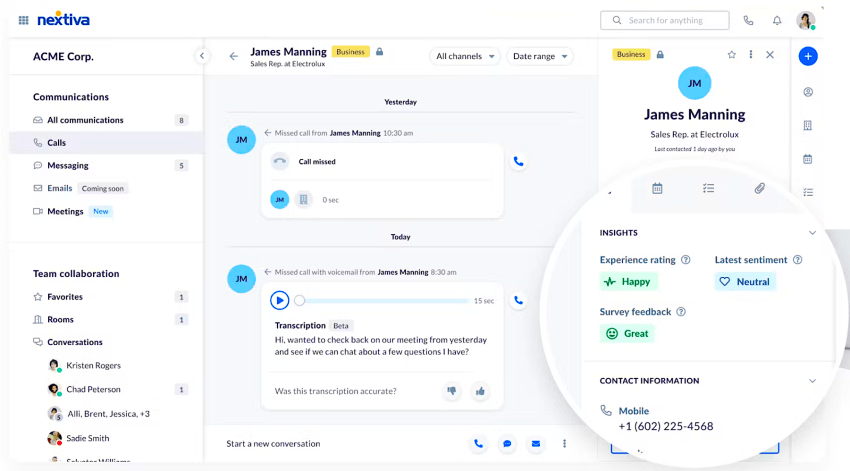
CRM integration
Integrating your communications platform with your CRM creates a unified hub for all customer data. The CRM tracks customer journeys and interactions across departments — from sales and support to account management and finance — keeping information current based on recent communications. Business integrations provide instant context for every customer interaction, enabling personalized messaging and relevant engagement at each journey stage.
AI-powered assistants
AI uses customers’ history to suggest auto-replies, saving customer service reps ample time. It also facilitates intelligent routing, connecting customers with the most suitable available agents without manual intervention. Automation creates continuous efficiency improvements for customer service teams.

Across thousands of calls, this precision has reduced transfers by 35% for Nextiva users.
Call monitoring and analytics
Contact center analytics reveal precisely where and why service delays occur, helping identify root causes for systematic improvement. These tools monitor individual and team efficiency through key performance indicators, enabling targeted improvements when metrics fall below expectations.
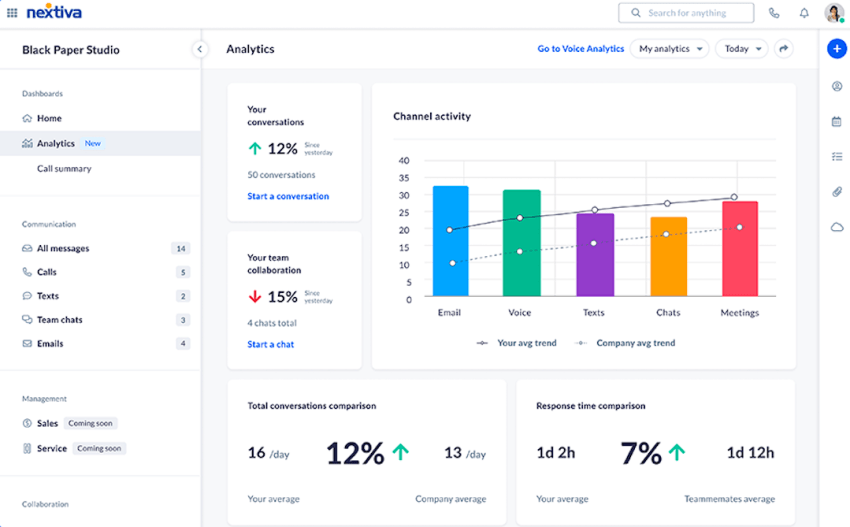
Nextiva Contact Center Delivers Award-Winning Customer Service
Nextiva streamlines customer interactions while empowering agents through efficiency-focused features. The platform aggregates voice, video, and CRM data in a single dashboard, giving service professionals comprehensive access to customer information and communication history.
This integration prevents miscommunication and eliminates redundant work, saving valuable time. AI further enhances efficiency by automating manual workflows like routing as well as suggesting relevant knowledge base articles. Additionally, the platform enables CX managers to monitor critical metrics like AHT and CSAT to identify and address inefficiencies proactively.
Ready to build intelligent workflows that transform your customer service efficiency? Book a Nextiva demo today, and start scaling your customer service operations more effectively.
Create an amazing customer experience.
Surprise and delight! Have conversations with customers the way they prefer to communicate — in a single app.
Frequently Asked Questions
Companies with efficient customer service see up to 30% lower support costs through automation and self-service. This drives 5% better customer retention (which can boost profits by more than 25% according to Harvard Business Review), 35% more upsell opportunities, and 40% less agent turnover.
The biggest mistakes include excessive automation of tasks that need a human touch, obsessing over time metrics while ignoring quality, implementing technology without adequate training, neglecting agent well-being, and applying one-size-fits-all solutions regardless of business size. Efficiency should reduce stress for both customers and agents, not increase it.
Small businesses should master the fundamentals first: solid self-service content, simple automation for routine inquiries, all-in-one platforms instead of multiple tools, and mobile-friendly support options. Enterprises should invest in advanced analytics to spot system-wide improvement opportunities, seamless cross-channel integration, custom AI solutions for industry-specific challenges, and proactive service systems that prevent issues arising before customers notice them.
The most promising technologies include predictive systems that fix problems proactively, voice analytics that detect customer frustration in real-time, AR tools for visual troubleshooting, streamlined verification processes, and hyper-personalized support experiences. These technologies deliver tangible improvements rather than just generating industry buzzwords.
Well-implemented efficiency initiatives eliminate repetitive tasks, provide better information access, create more manageable workloads, and allow agents to focus on meaningful problem-solving.
Start by clearly identifying current bottlenecks with data, involving agents in solution selection, measuring baseline performance before making changes, allowing extra time for training, and scheduling regular reviews to fine-tune the system. This prevents new problems from being created while solving existing ones.

















 Customer Experience
Customer Experience 

